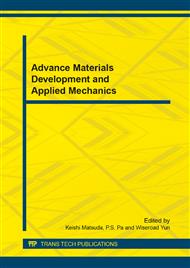p.238
p.242
p.249
p.253
p.257
p.262
p.266
p.272
p.276
FE Modelling of Residual Stresses and Validation Using Chip-Mechanism and Microstructural Analysis of Ultrasonic Vibration Assisted Turning of Ti Alloy Ti-6Al-4V
Abstract:
Ultrasonic assisted turning (UAT) is a novel manufacturing technology, where high frequency vibrations are imposed on the movement of a cutting tool. A 2D FE transient simulation is developed in DEFORM, where ultrasonic vibrations of frequency 20 kHz and amplitude of 20 μm are provided to the cutting tool in the direction of cutting velocity. The prediction of residual stress distribution is carried out using elasto-plastic finite element simulations. Experimental analysis is carried out in measuring the strain at the cutting tool during CT and UAT along with the chip mechanism and chip microstructure study to validate the residual stress distribution. The ultrasonic vibrations yield a considerable improvement in compressive residual stresses which ultimately benefits in improving fatigue life of titanium alloys.
Info:
Periodical:
Pages:
257-261
Citation:
Online since:
July 2014
Authors:
Keywords:
Price:
Сopyright:
© 2014 Trans Tech Publications Ltd. All Rights Reserved
Share:
Citation:


